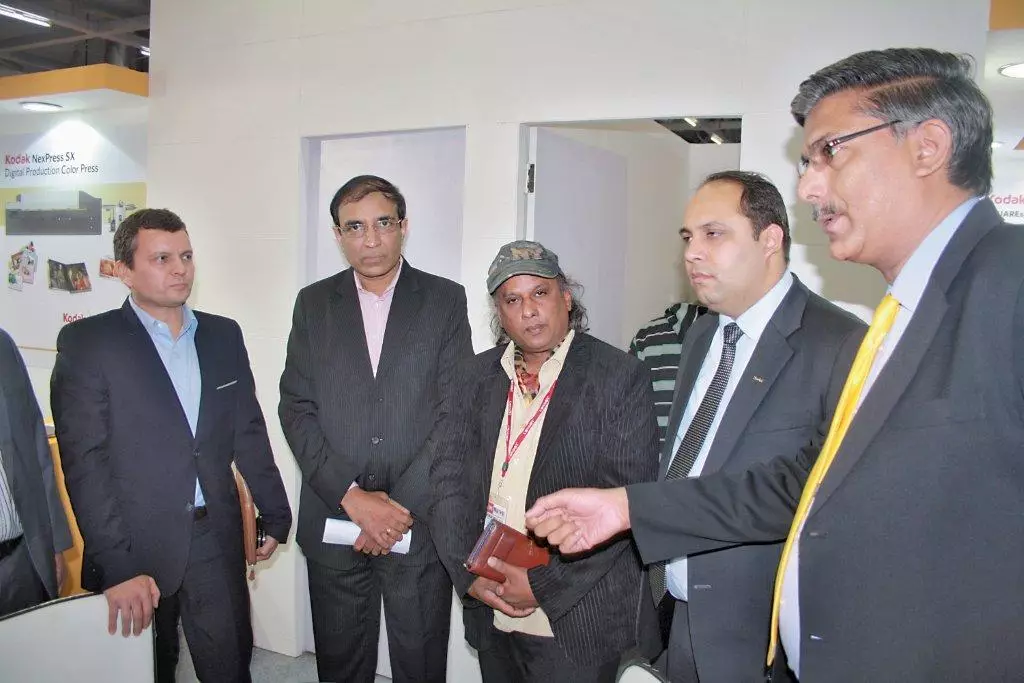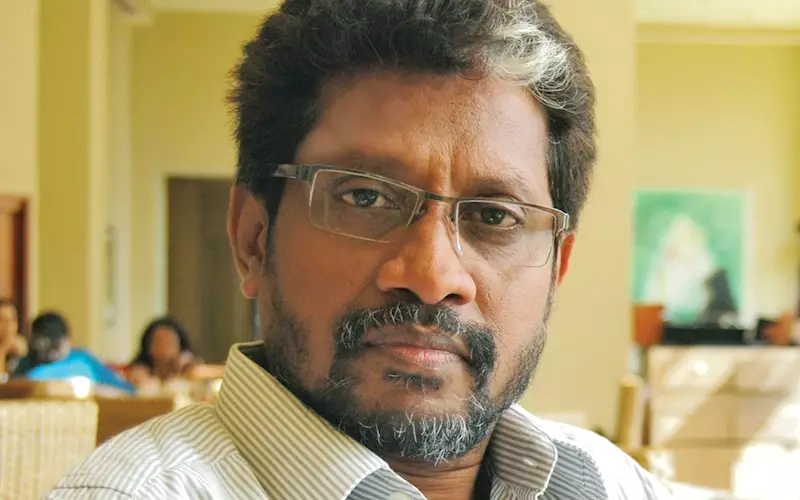We expected the best of technology-evolutions from Drupa to find their way to PrintPack India but were left a ‘little’ disappointed. A quick round-up of the digital arsenal at the show by Supreeth Sudhakaran and Noel D’cunha.
At Drupa, B2 format digital presses, using both inkjet and electrophographic technologies were one of the key themes, though only few were actually ready for sale.
The other technology that is doing the round globally is 3D printing, and the buzz seems to be getting louder even in India. In a recent poll survey on the PrintWeek India website, where we asked ‘which technology will change the game in 2013’, 3D printing emerged as the promising game changer. Of the 306 respondents, 35% believed that 3D printing is flourishing in a big way, has the potential to lead the production trends and capacities; and which may change the industry significantly in the future. Nevertheless, additive manufacturing or 3D printing is still far from its beta-stage, it is definitely making its way into discussions at major forums.
Globally, digital is manifesting and evolving itself in different forms, and so, it was natural for people to expect a reflection of the same trend in India. However, PrintPack India, one of the biggest print and packaging industry exhibitions in India, wasn’t a ‘digital PrintPack’. None of the new technologies— the B2 presses, demonstrated at Drupa— found its way here. Fuji and HP were present, but not the machines. Both presented poster displays of their respective B2 machines; Fuji with JetPress 720 (with additional improvements since Drupa) and HP with Indigo 10000.
Among the other digital players in the cut-sheet arena, Canon, Fujifilm, Kodak, Konica Minolta and Xerox were the major names present at the show, with Ricoh conspicuous by its absence. Of these, Xerox gave two of its recently launched machines an India debut and HP gave the PrintPack India visitors a look at two Drupa debudants, Indigo 5600 and Indigo 7600 digital presses.
In this article, we take a look at what the digital players had to offer and the trends.
Xerox India

JMD Colour Scan signed a deal for Xerox Color Press 1000 at the show
Xerox India comes first, because the company post-Drupa has introduced two new machines, and mid-way through the show came the announcement of the company acquiring Impika, a leader in the design, production and sale of production inkjet printing solutions used for industrial, commercial, security, label and package printing.
The two new launches were Xerox Color J75 and C75. The two presses, which were launched at North Print America in early February, were slated for worldwide availability only by 1 March, 2013. By making the two new launches available in India, before the time, showed how keen Xerox India was in bringing the J75 and C75, which combine duplex printing, copying and scanning machines with a range of finishing options, and are aimed at mid-production commercial printer and quick printers, who print 30,000 to 1,00,000 copies per month. Both Color C75 and J75 are capable of printing and copying at 2,400dpi resolution on a range of coated and uncoated stocks from 64-300gsm at speeds of up to 75 pages per minute (ppm). The USP of the J75, which is a higher-end engine, is that it can handle all paper stocks at its top-rated speed (75 ppm for uncoated stocks and 51ppm for coated) and the ability to print on both sides automatically.
Xerox has been reselling the Impika brand in Europe since 2011, expanding to several developing markets in recent times. In addition to its existing xerographic production presses, Xerox also has the high-speed waterless inkjet presses, the CiPress production inkjet. By adding Impika technology to its offerings, Xerox will now go to market with the a broad range of digital presses, strengthening its position in digital colour production printing.
Impika offers a portfolio of aqueous (water-based) inkjet presses based on proprietary technology. Impika product lines include iPrint, a range of continuous feed production printers that print at speeds as fast as 375 metres per minute, and iPress, a range of graphic communications digital presses with resolutions of up to 2400x1200 dpi.
Kodak India
For Kodak, success in the digital print segments have come from hybrid printing, where inkjet heads are fixed on packaging systems or offset presses or conveyor lines, imprinting on a small section of something that has already been printed on different printing technology. In Asia, Kodak has installed around 200 such systems.

Lucknow’s Kaydee signed a deal for purchase of four Nexpress SX 3300 Photo
The other big success has been the Prosper models, which have been printing over 150mn sheets every month in Asia. Recently, Repro India installed India’s first Prosper 1000. The press is used to print books and collaterals, and the installation at Repro came through after four-years of explaining the technology and the possibilities of the Prosper. Kodak was very careful in installing the press; they were looking for a customer who has high-volume to realise the Prosper’s potential. They saw it in Repro India.
Kodak’s NexPress digital production colour press offers dimensional printing capabilities that gives specified text and images a raised or 3D effect. It’s a heavy-duty production press suitable for both commercial as well as photo segments. At the show, Kodak signed a deal for four NexPress machines.
HP India
In October 2012, Gido van Praag, vice president and general manager – graphic solutions business, HP (Asia Pacific and Japan) had told PrintWeek that since Drupa, HP has been investing to tap the growth of packaging industry in India with its high-speed wide digital production presses.

HP’s stand offered visitors a good look at HP Indigo 5600 and Indigo 7600 digital presses
HP’s 275 sqm stand offered visitors a good look at the HP Indigo 5600 and Indigo 7600 digital presses. Indigo 5600 delivers digital offset and photo quality and can switch between jobs and media types. The press, which can handle around 2500 certified substrates, is now available with an added ability to print on synthetics including PVC, PET, Teslin, and PC. HP claims that the press is capable of printing well over two million colour pages or five million monochrome pages per month. Using the Enhanced Productivity Mode (EPM), the press can print colour jobs at a speed of 90 pages per minute. It also reaches speed of 272 ppm when operated in monochrome mode.
Entailing almost similar features to that of Indigo 5600, the 13x19-inch format digital sheetfed press Indigo 7600 offers printers with a wider sheet-size. In addition, several special effects such as raised print and textured effects can open up a wider gamut of applications that can be turned-around using this press. HP claims that the press can print up to 120 four-color 8.5x11-inch pages per minute, which can be stretched to 160 pages per minute in EPM mode. For monochrome and two-colour jobs, the press offers a speed of 240 pages per minute.
Canon India
Canon India had a bunch of small and entry-level digital printers focusing on the quick photo-printing as well as the variable data and commercial printing jobs at its 190 sqm stand at the show.
The transpromo and variable data printing offering from Canon included the C7010 VP and Oce 2110 VP presses. In the quick-photo printing segment, Canon showcased its ID card printer PR-C101. Canon also displayed its wide format printers for various segments of graphics arts and CAD Printing. Plotters such as iPF8300, iPF 605 and PW350 were displayed at the show that caters to the CAD and AEC industry.
Setting aside a section of the stand to display various applications possible on the presses displayed at the show was well-received by visitors to the stand as it offered them a chance of physically scrutinising the quality.
Based on the oil-free V-toner laser electrostatic transfer technology, the C7010 VP is capable of printing a sheet-size of 13x19-inch with a 1200dpi resolution. Last year, the press also crossed the hundred installation’s mark in India.
The iPF605 is a five-colour 24-inch large format printer for CAD and GIS applications. With an optimal resolution of 2400x1200dpi, it can take 33 seconds for A1 plain paper roll prints in draft mode. Oce PW350 is an upgraded version of the PW300 wide-format press with around 50 small component changes. Oce claims that the machine can throughput up to 6 A1 plots per minute; which is 50% faster than its predecessor PW300. It uses a mixture of Electrophotography (LED), organic photoconductor (OPC), clean closed toner system and Océ Radiant Fusing technology, thus enabling it to print with 600x1200dpi resolution. It also offers the printers with an optional two media-roll configuration and can also handle selected filmic media.
Konica Minolta
The company was represented by HCL, KMI and Monotech. Though there was nothing new to show barring the Konica Minolta C6000 and the C8000, the TechNova-Konica Minolta announcement did raise eye-brows. We spoke to one of the Konica Minolta partners, who far from seeing TechNova as a rival, welcomed the company’s decision to represent Konica Minolta. “The name of a big Indian brand attached to the marketing of the product in India, will increase the products acceptability,” he said, without wanting to be named. At the stalls of each of the three KM partners, there were also few installation announcements.

Pre Press Services’ Sumeet Wadhwa, who was the first to install the C6501 in India, signed a deal for Bizhub C8000 at the HCL Infosystems stand
Conclusion
From the big announcement by Benny Landa in 1995 to the big news in the digital printing industry in 1997, the DocuColor system from Xerox, to things turning full circle with Benny Landa’s Nanography at Drupa 2012, the digital segment has improved both in quality of image as well as flexibility, such as variable data printing and the turnaround speed.
The Indian digital print industry is reported to be growing at 35% and most of the digital print service providers we met seemed to be growing, adding new machines to meet the growing demand. Photobooks has seen a 30% growth, but is a vertical that hasn’t been the domain of traditional printing.
India is second to China in terms of printing market, and is growing but the digital print segment is still evolving. As one printers, said: “If we have to succeed and become profitable with the type of digital equipment on display at PrintPack 2012, we will need help in terms of reductions in consumable costs, equipment financing arrangements and marketing support.”















 See All
See All